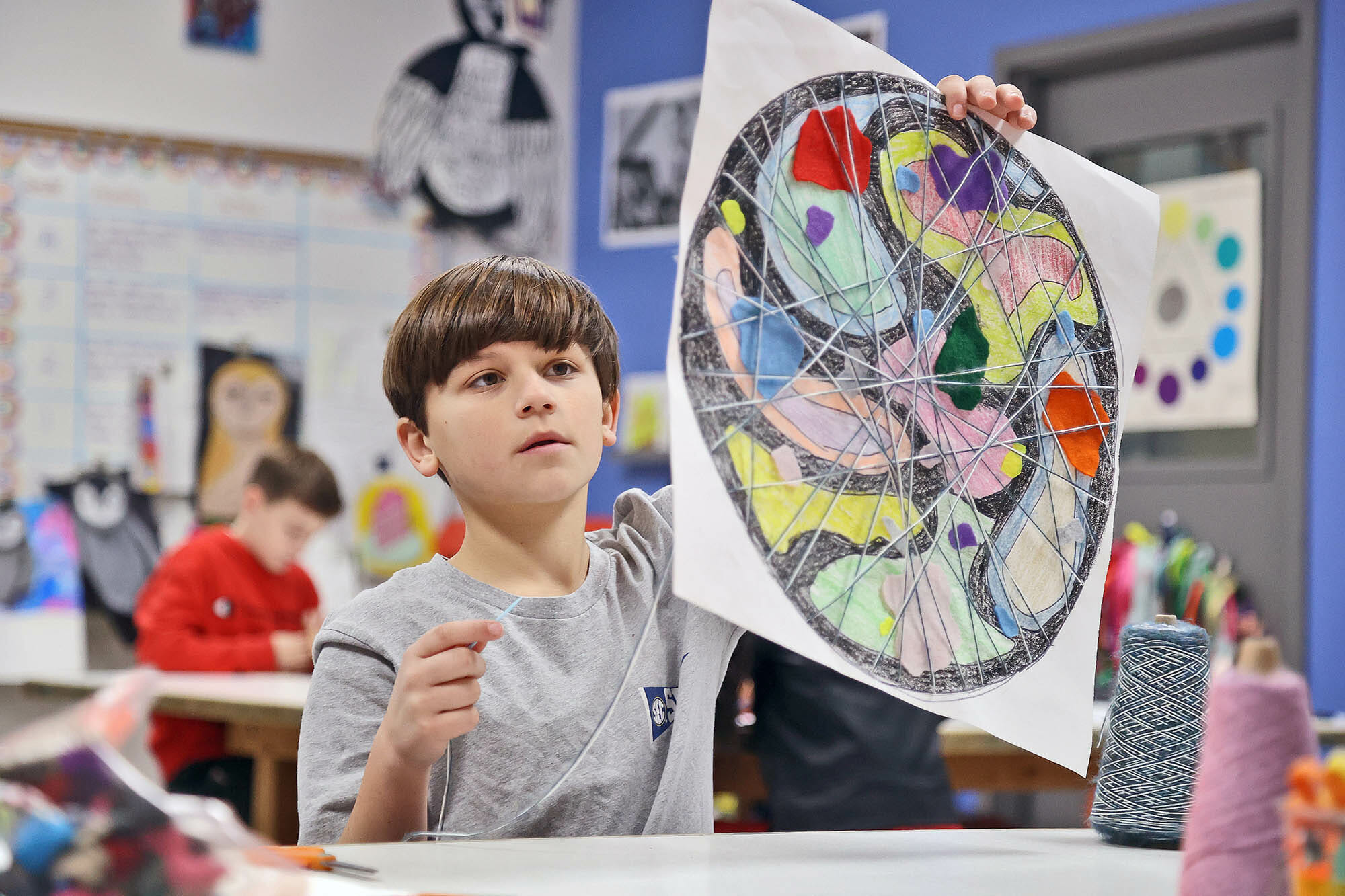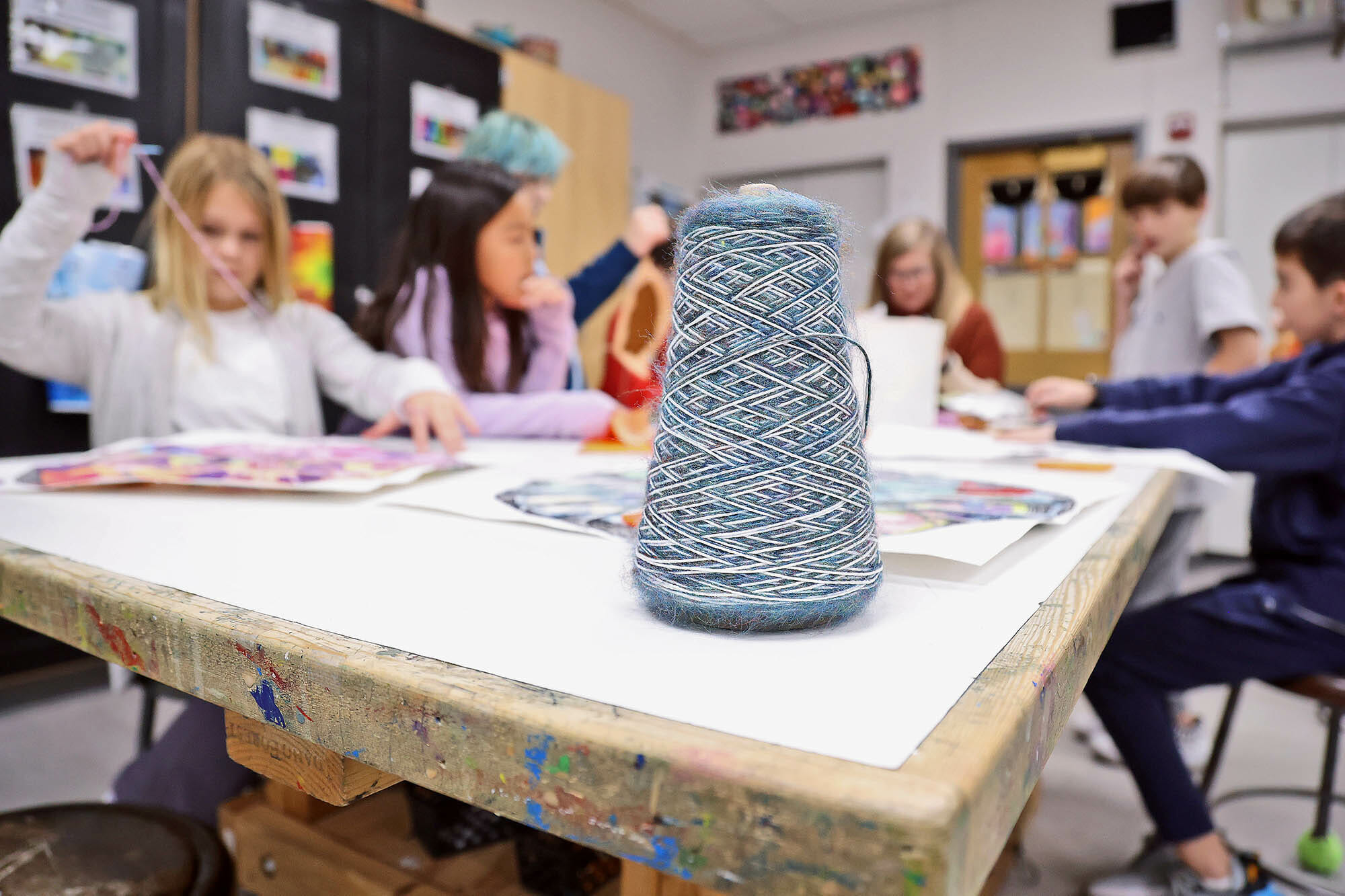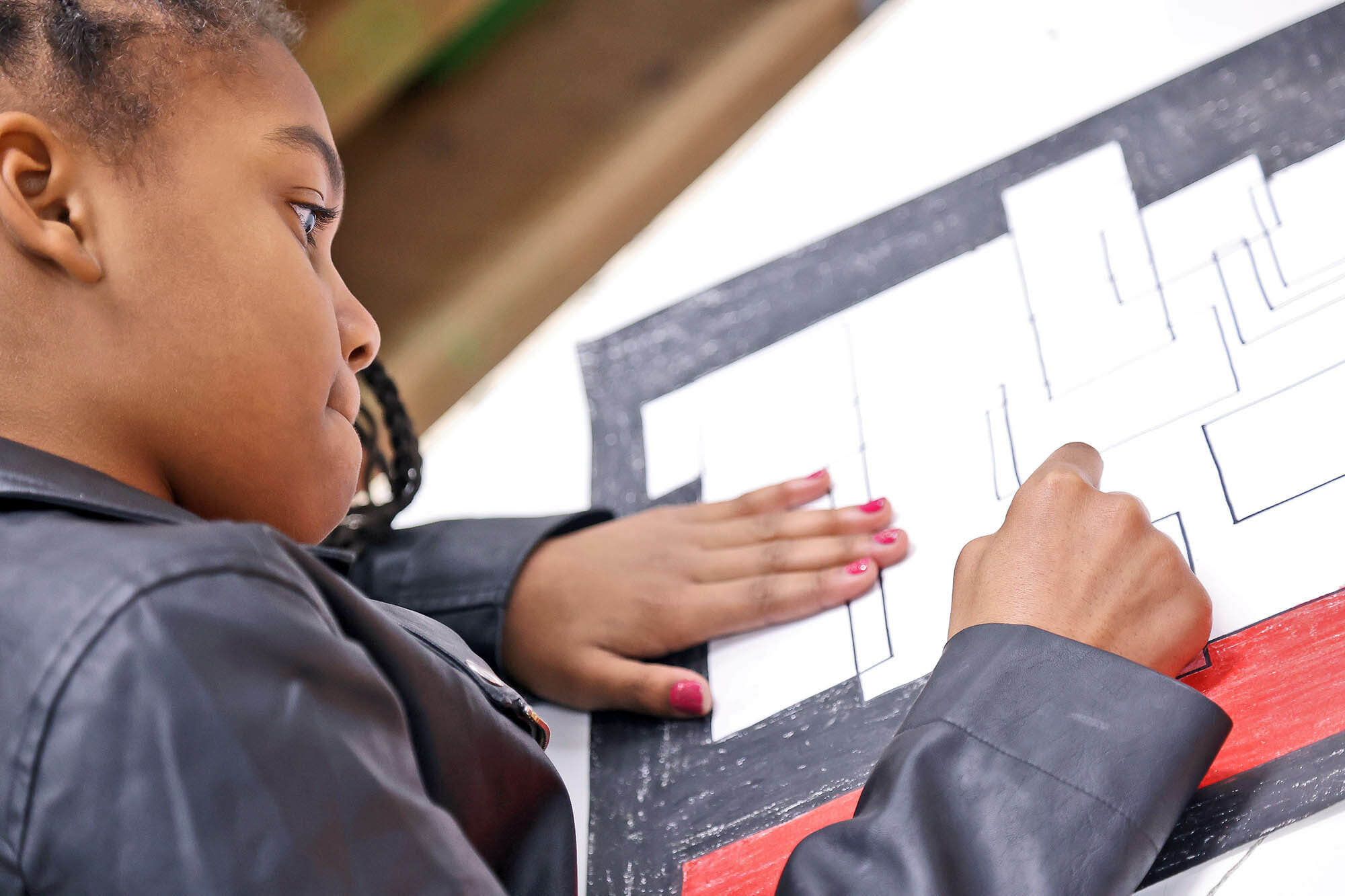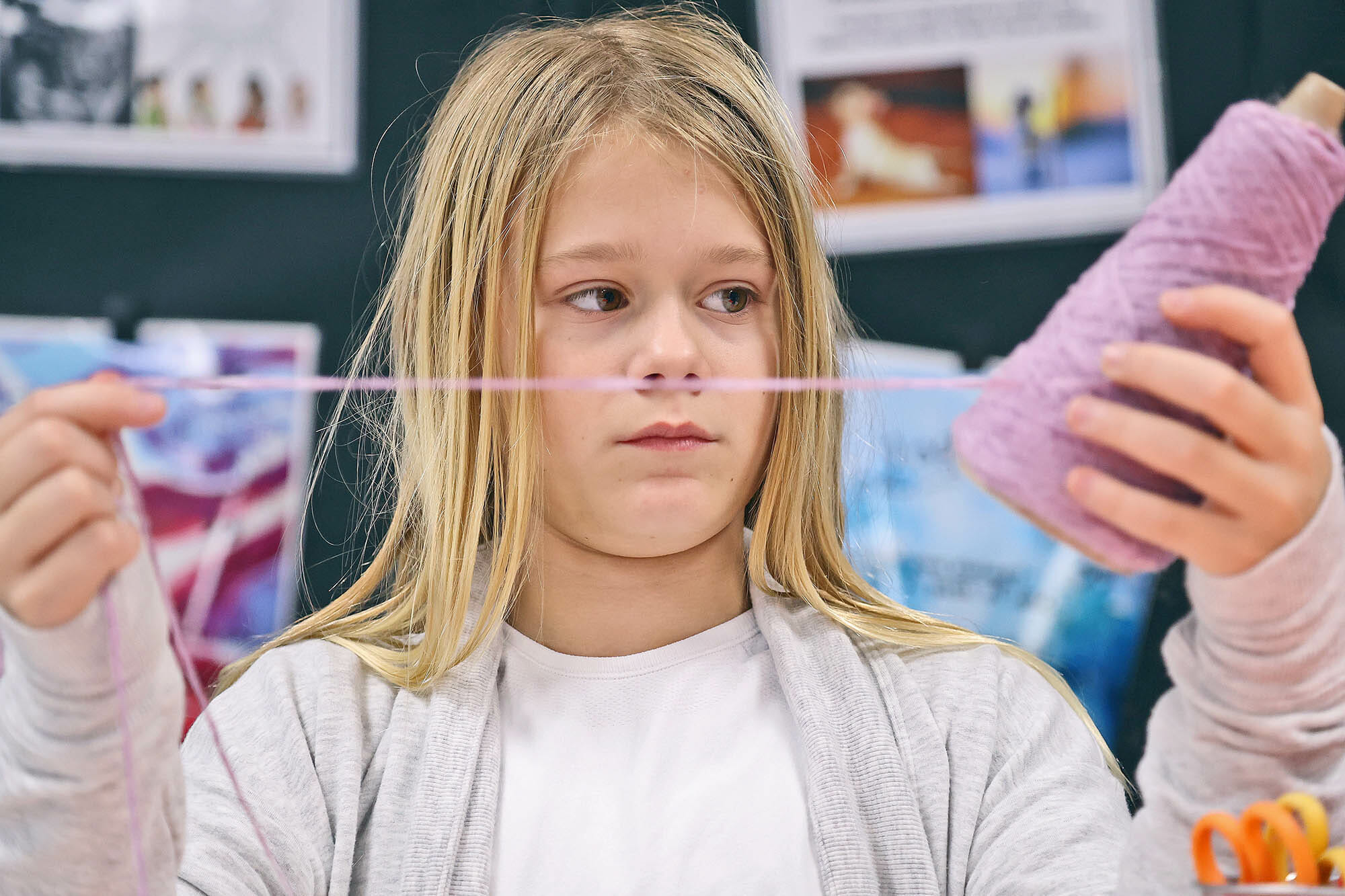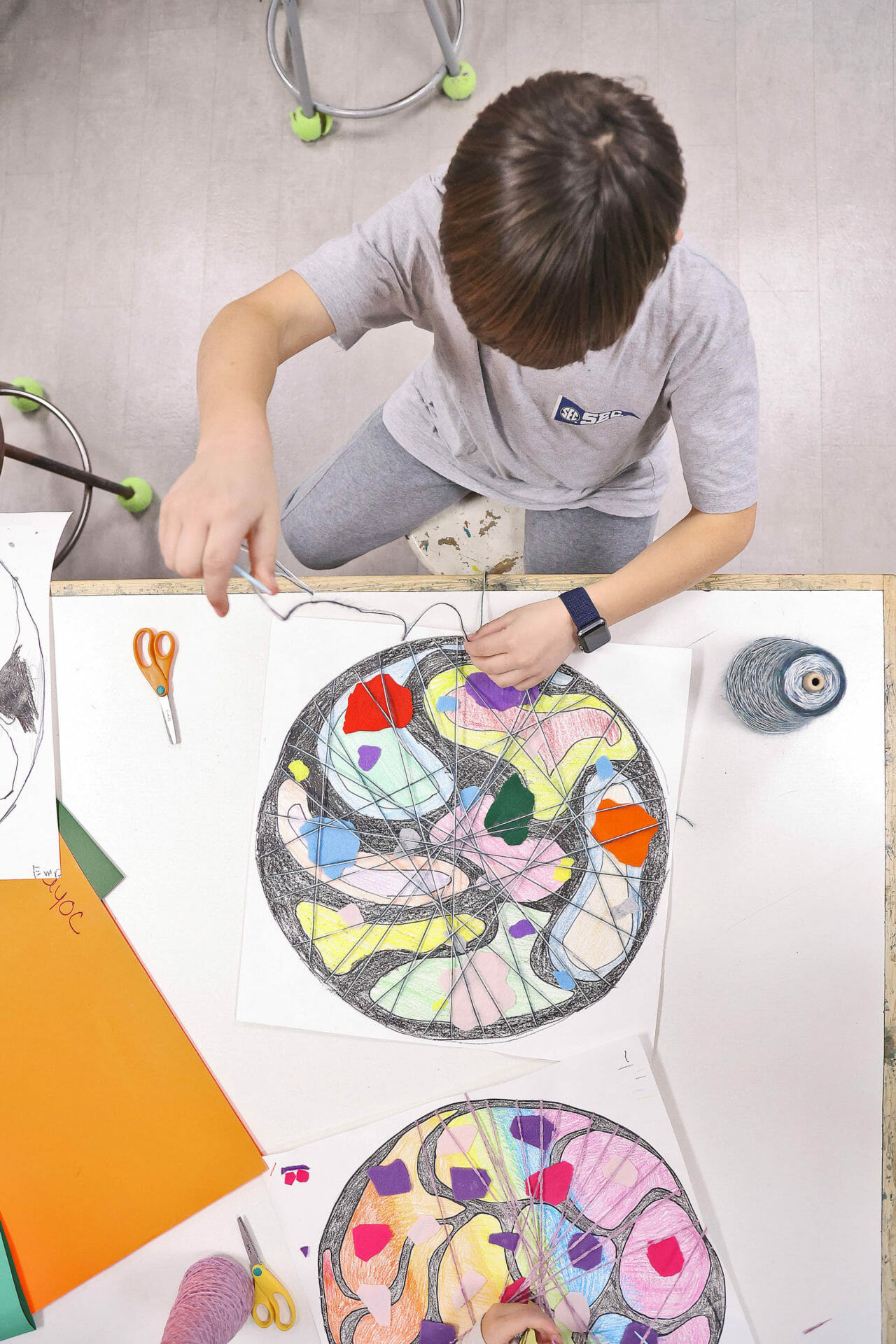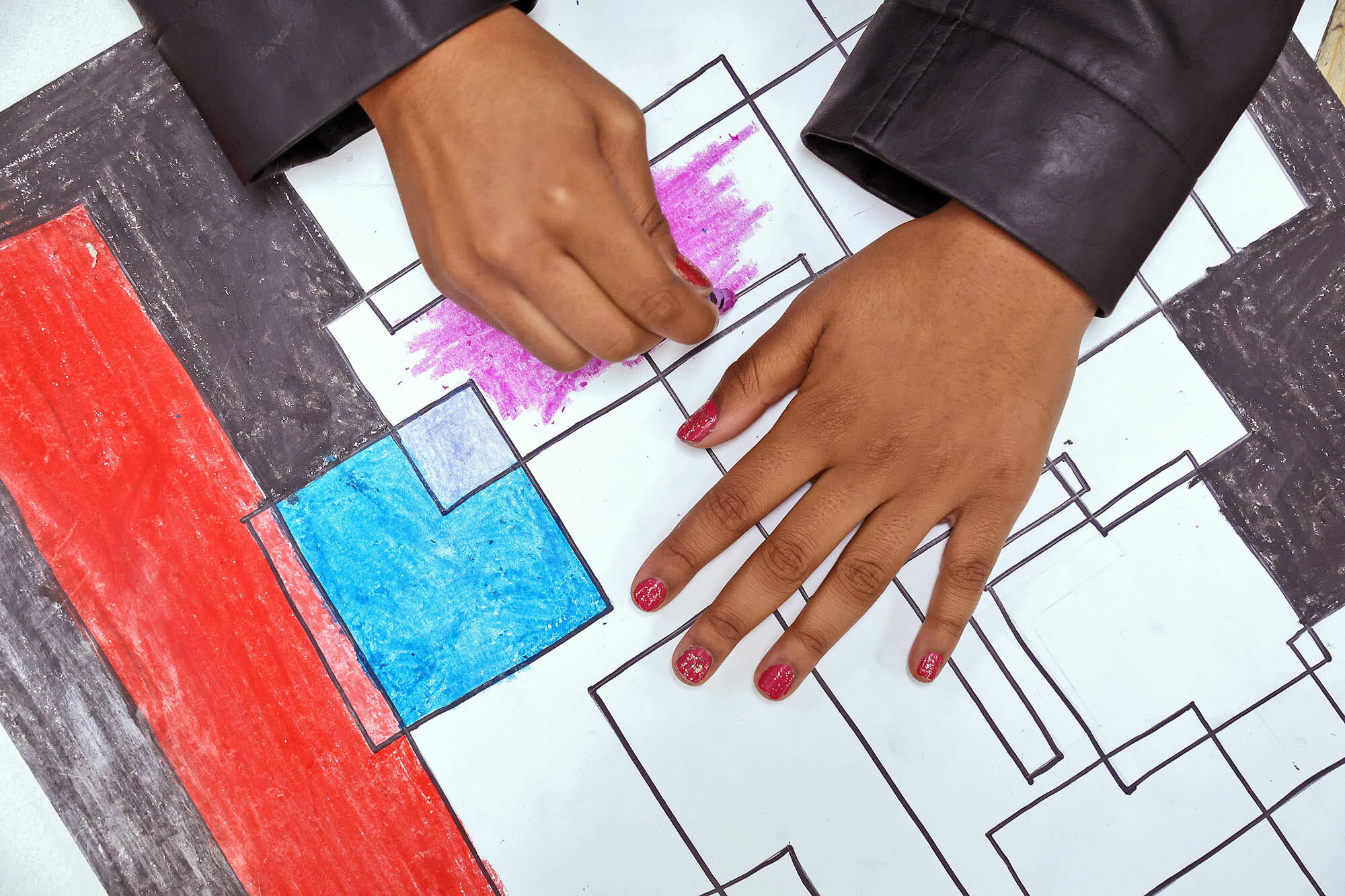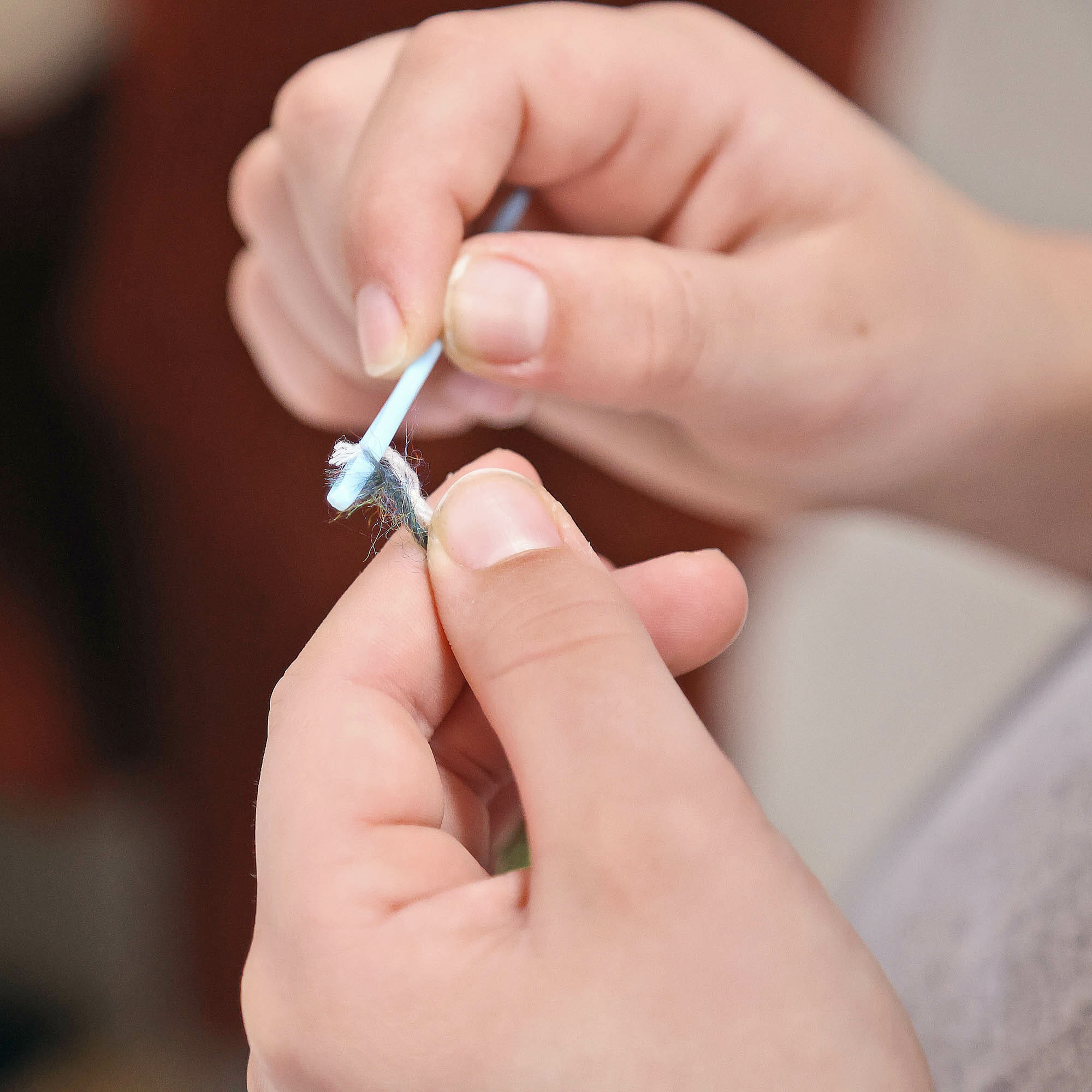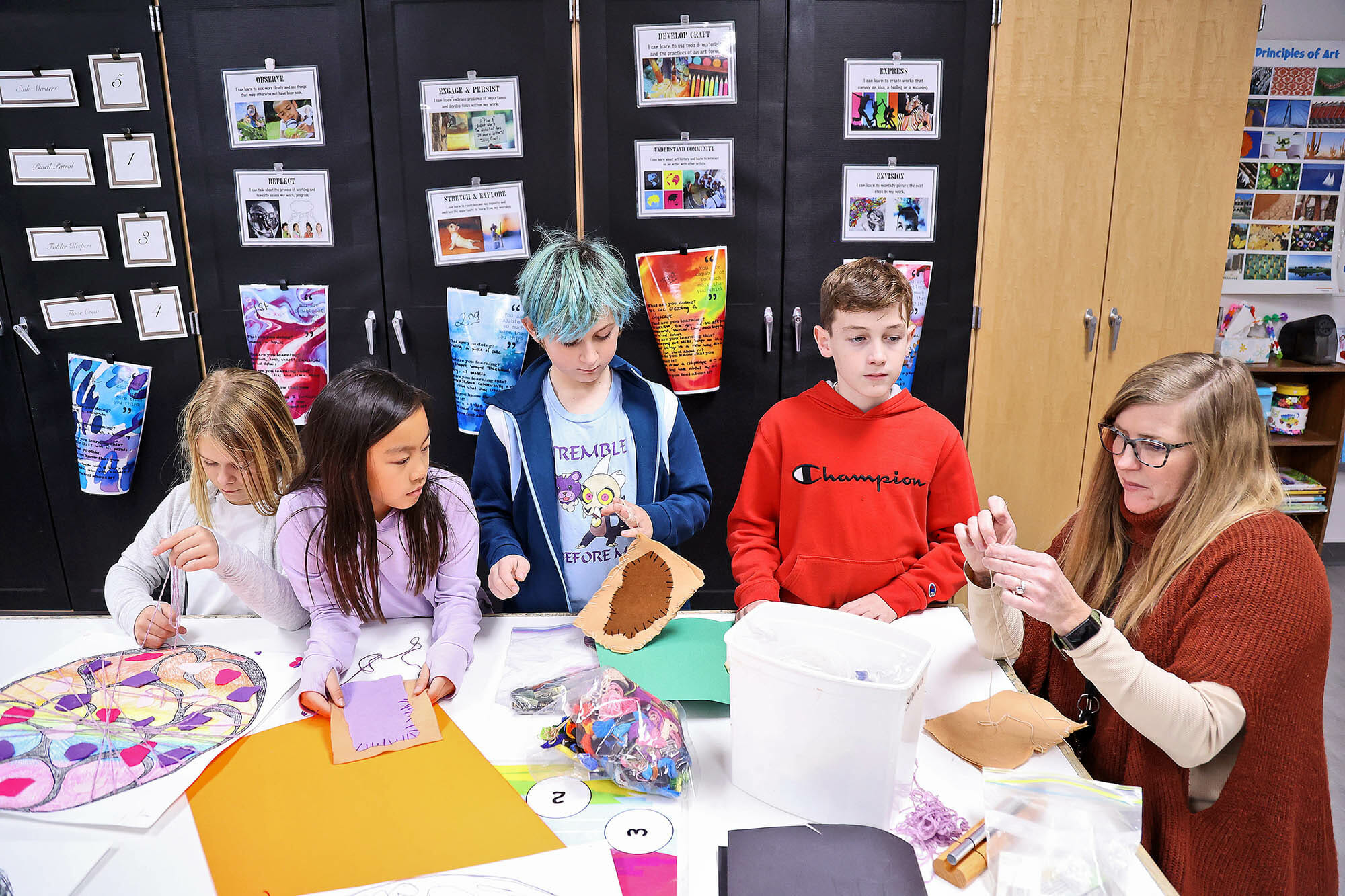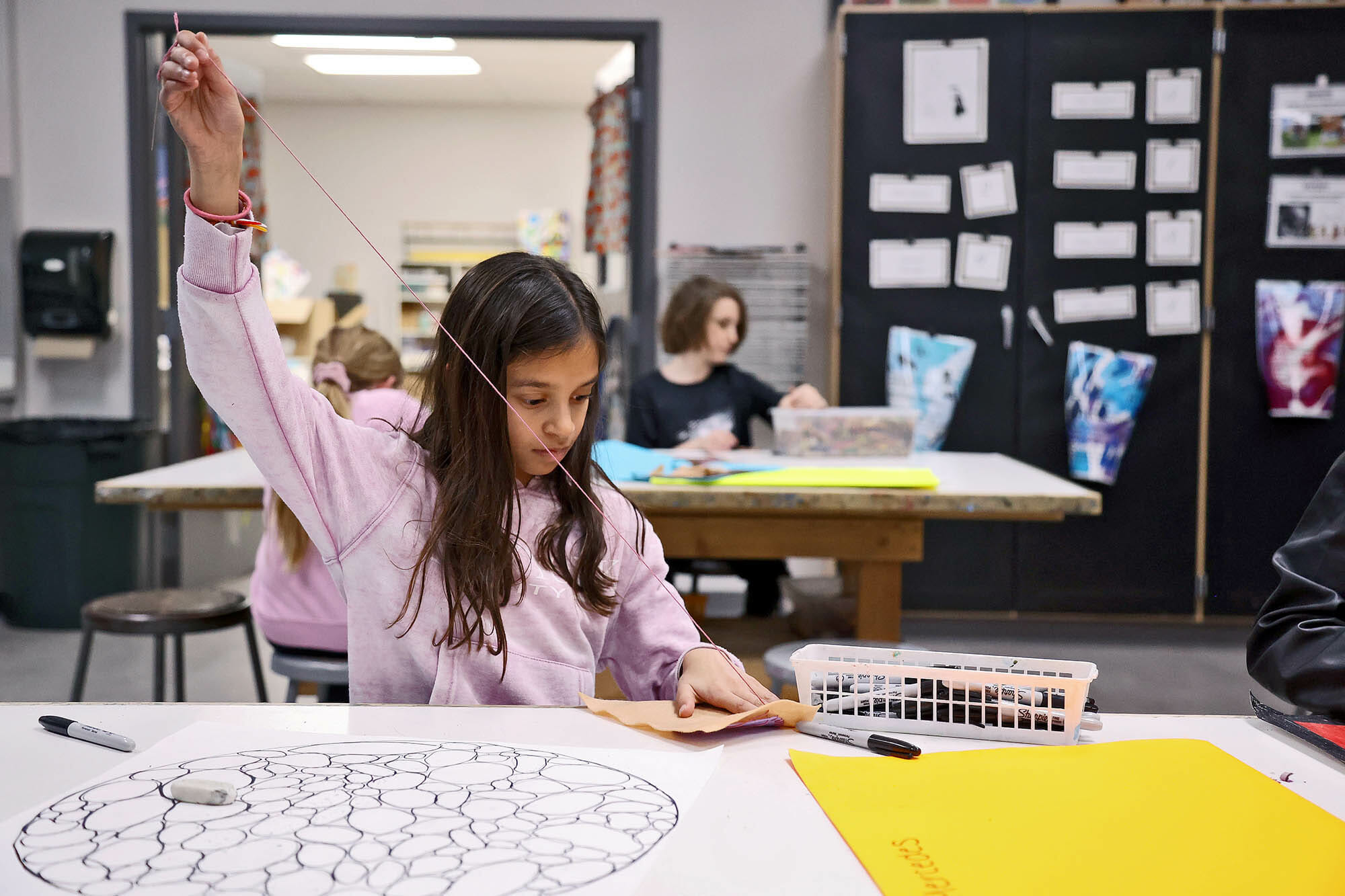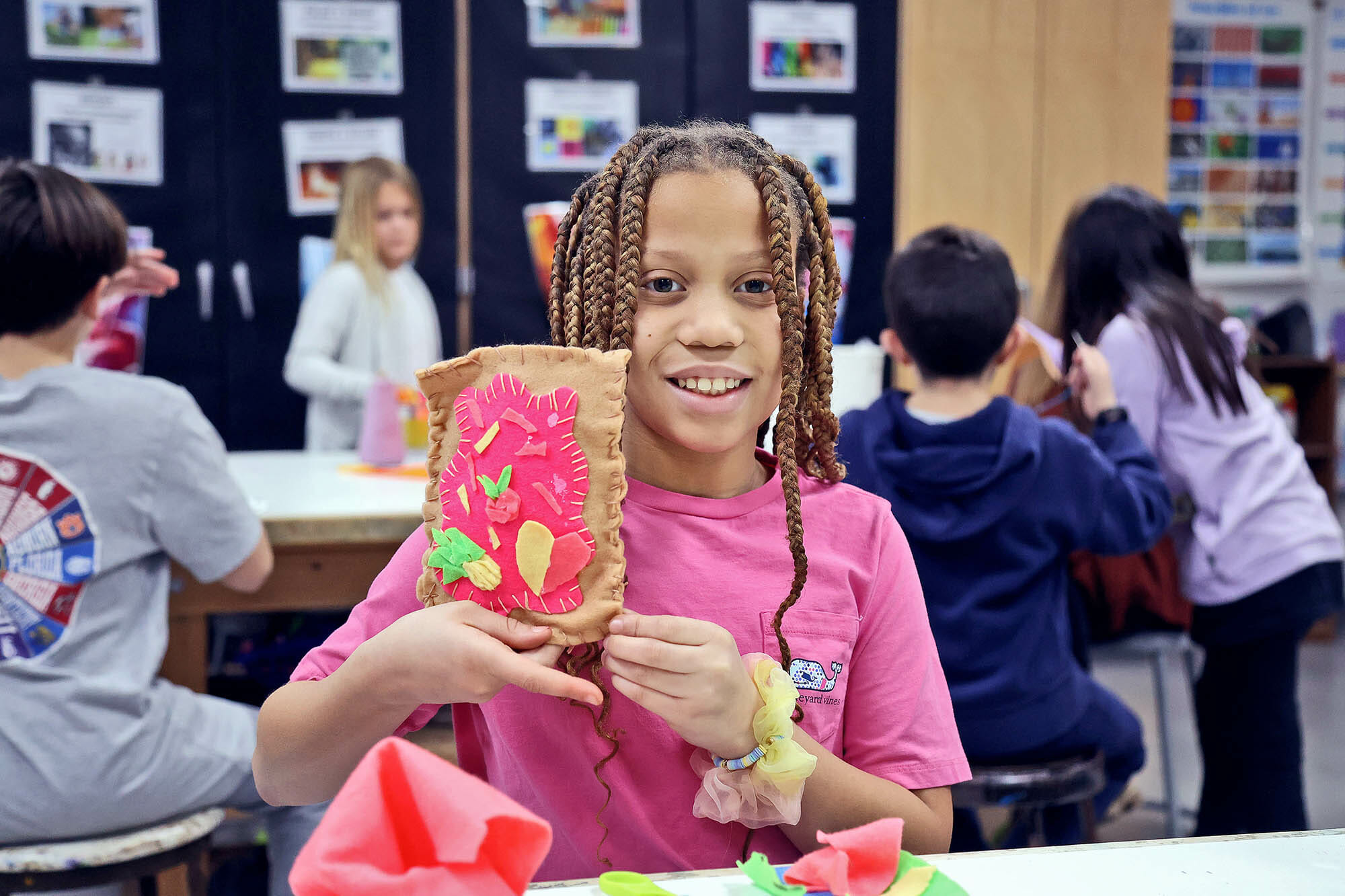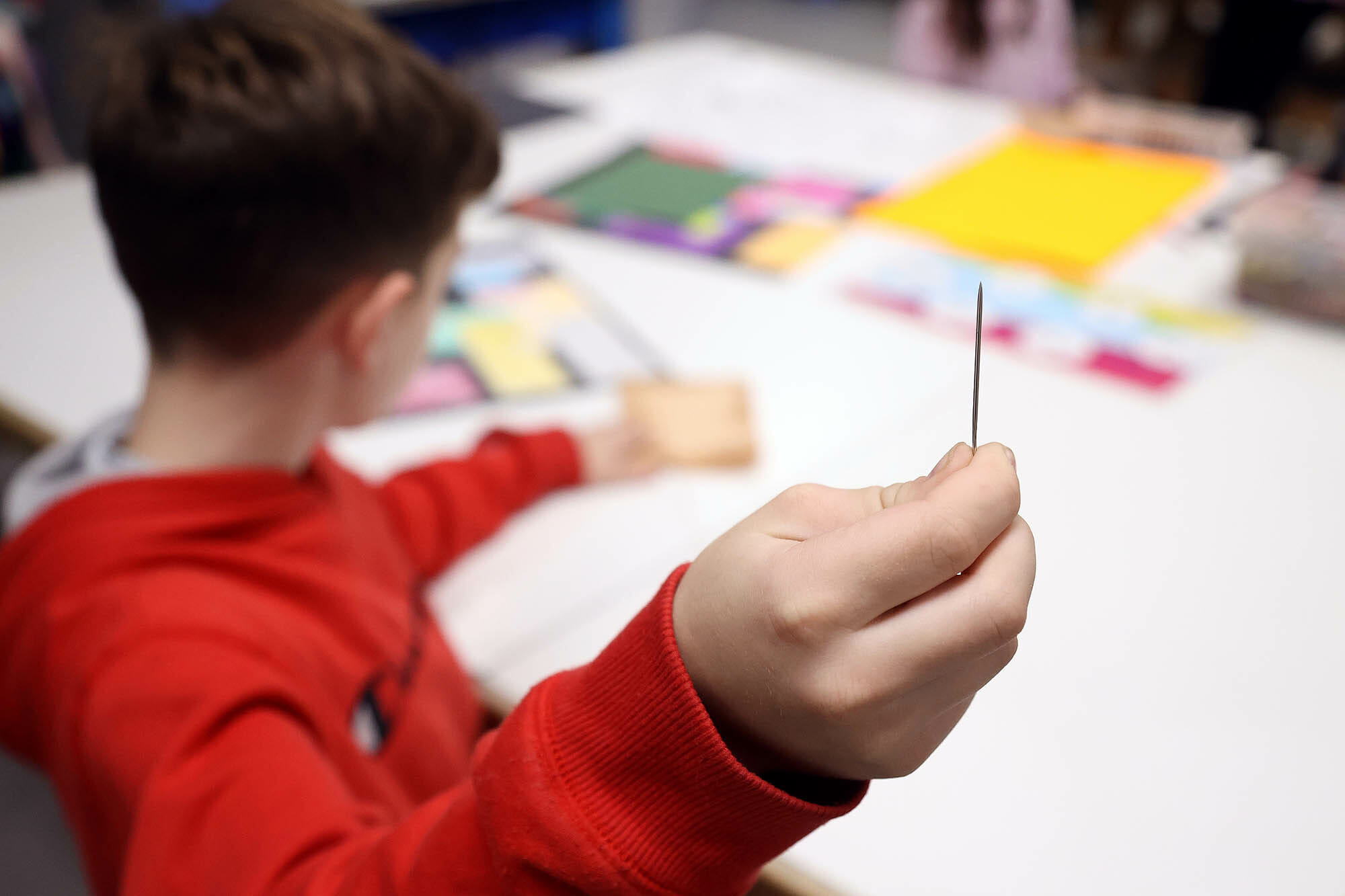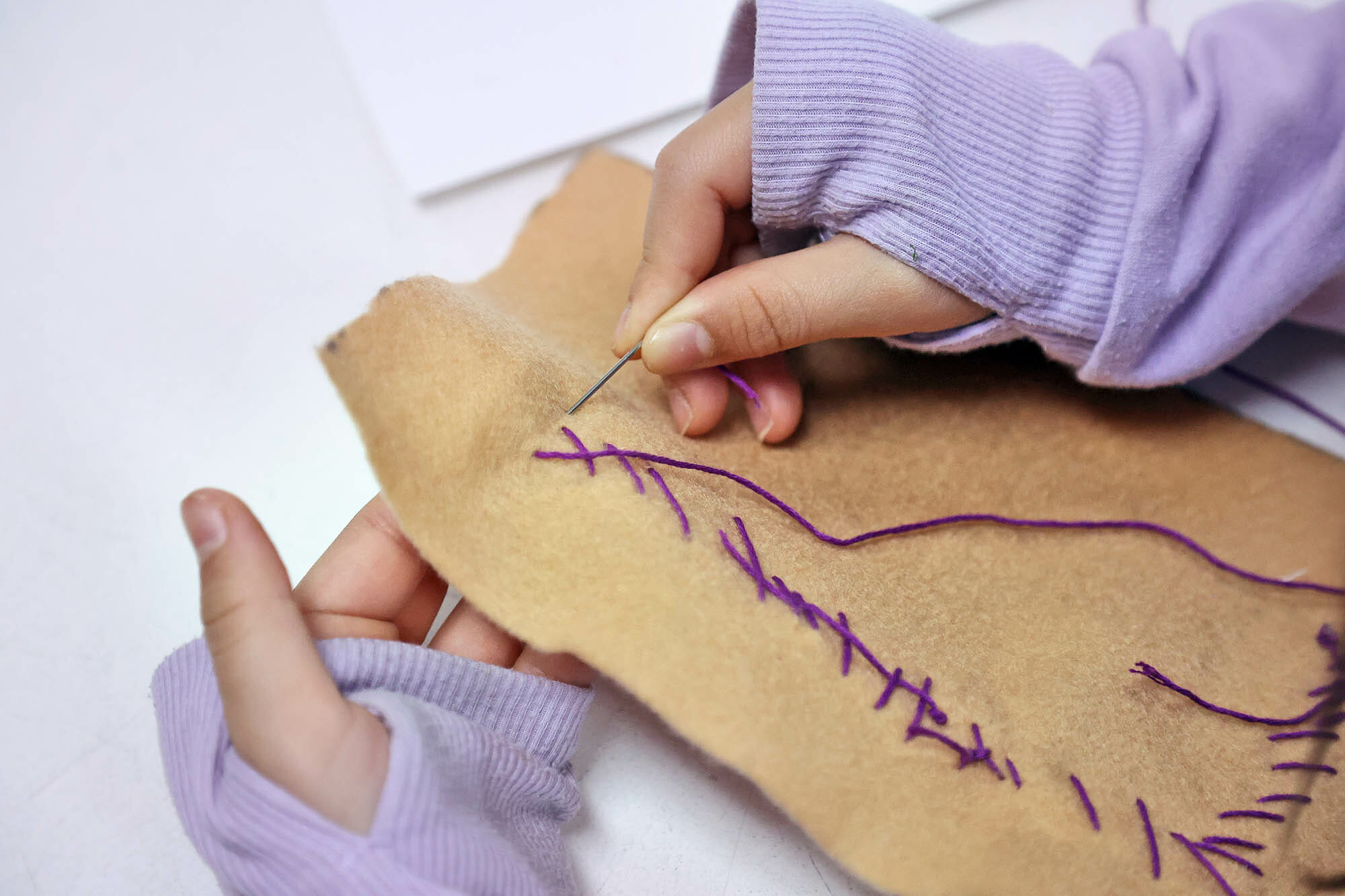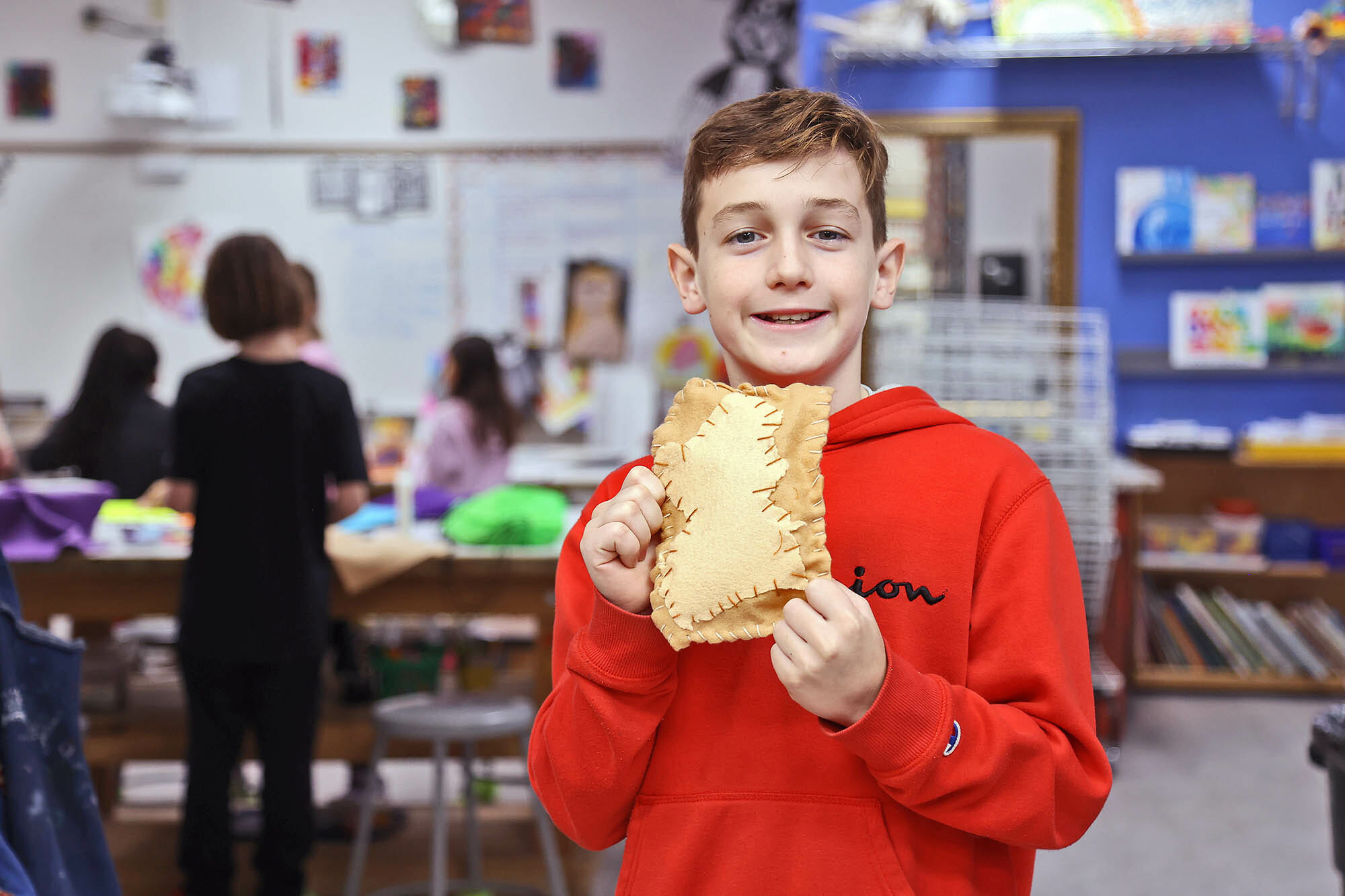What have our fourth-grade artists in Lower School Visual Arts Teacher Sarah Garner’s class been learning about and creating? They’ve been learning about art inspired by fiber artist Judith Scott and have explored Pop Art.
Recently, fourth-grade students read the book Unbound: The Life and Art of Judith Scott by Joyce Scott with Brie Spangler and Melissa Sweet. Judith Scott is an internationally-recognized fiber artist who also had Down Syndrome. She created over 160 sculptures and pieces of art at the Creative Growth Center in Oakland, California. Creative Growth is described as “a model for a creative community guided by the principle that art is fundamental to human expression and that all people are entitled to its tool of communication.” The center is an art studio for people with disabilities to explore their creativity. The artists at Creative Growth are not recognized for their disabilities but for their potential as communicators through art.
After learning about Scott, the fourth-grade artists developed a concept that art can connect us all. To illustrate this idea, Garner challenged them to create pieces inspired by Judith Scott which embody how Scott created—with lots of layers, lots of materials, and lots of repetition.
“The pieces that our Beasley artists are creating have three layers,” said Garner. “The first layer consists of repeated shapes and colors. It is followed by a layer of repeating shapes but this time adds texture with felt cutouts added on top of the first layer. Finally, the finishing layer incorporates repetitive movement with yarn across the piece with the goal of thinking about using multi-media to create a cohesive piece that also draws inspiration and pays homage to Judith Scott.” See some of their Judith Scott-inspired creations below!
Also this month in fourth-grade art, students were introduced to the Pop Art movement by various artists and learned about the common themes found in Pop Art: bold color, from popular culture, mass-produced, and created for the masses. The artists were then challenged to problem solve and design a pop tart label for a new or favorite flavor that included the characteristics of Pop Art.
The 2-D design that each student created of their Pop Tart logo was then the jumping-off point for creating a soft sculpture of a Pop Tart. “We specifically looked at the sculptures of
Claes Oldenburg as some of the references,” Garner said. Students used felt to construct their soft sculptures of a Pop Tart and learned some stitching techniques. “The 3-D sculpture had to be the flavor that the students designed in the logo, so you can imagine that the students had some visually yummy sculptures.” Check out how some of the Pop Art Pop Tarts turned out below!
How wonderful to see these inspiring examples of how art connects us to one another in such bright, creative, and expressive ways!
